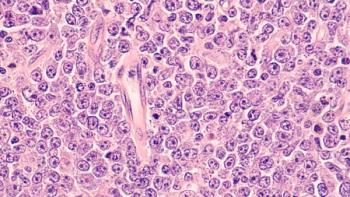
Opinion: Rates of Smoking Cessation Can Be Maximized With Dose Adjustments
Oncology nurses can discuss dose modifications for common smoking cessation agents with patients and providers to improve smoking cessation rates.
Tobacco use remains the leading preventable cause of death in the United States, claiming about 1 in 5 lives each year. On average, smokers die about 10 years earlier than non-smokers. Smoking is linked to approximately 20% of all cancers and 30% of all cancer deaths nationwide. It is the driving force behind 80% of lung cancer cases and deaths, making lung cancer the leading cause of cancer mortality. Beyond lung cancer, smoking significantly raises the risk for many other types of cancer.1
As oncology nurses, we are all too familiar with these statistics and the devastating impact of smoking on our patients' health.
There is evidence to suggest that smoking cessation improves outcomes following a cancer diagnosis. Continued smoking among patients with cancer has been associated with treatment-related complications and toxicities, an increased risk of recurrence, the development of secondary cancers, lower survival rates, and decreased quality of life.2
Of the patients who I treat who are still smoking, some express a desire to quit, while others may not feel ready to do so just yet. For those interested in cessation, my goal is to provide them with effective tools and support. In this article, we'll explore the latest strategies and research in smoking cessation, focusing a practical way to assist patients in their journey towards better health.
Pharmacologic Approach to Smoking Cessation Following Initial Treatment Failure
In a double-blind, placebo-controlled, randomized clinical trial conducted by Cinciripini et al., 490 volunteers were assigned to receive either 6 weeks of varenicline (Chantix) or combined nicotine replacement therapy (CNRT). Volunteers were eligible if they smoked 5 or more cigarettes per day and had an expired carbon monoxide (CO) level of 6 ppm or higher.3
Varenicline is an oral medication that acts as a partial nicotine receptor agonist. This means it partially stimulates the nicotine receptors in the brain to reduce nicotine cravings and withdrawal symptoms. Additionally, it blocks nicotine from binding to these receptors if a person smokes, reducing the pleasure derived from smoking and making it easier for individuals to quit.4
CNRT is the combination of a long-acting nicotine product, such as a nicotine patch, which provides a steady level of nicotine throughout the day, and a short-acting nicotine product, which can be used to manage acute cravings.
The initial starting dose of varenicline followed the recommended titration schedule: 0.5 mg once daily for days 1-3, 0.5 mg twice daily for days 4-7, and 1 mg twice daily thereafter. The dosage of the CNRT consisted of a 21 mg patch plus a 2 mg lozenge taken as needed. All volunteers also received smoking cessation behavioral counseling.
After 6 weeks, volunteers who were abstinent from smoking (verified by carbon monoxide breath test) continued the same medication until the end of the treatment at week 12. Those who were not abstinent from smoking were randomized to either continue the same treatment, switch treatments and follow the same initial dosing, or increase the medication dosage for an additional 6 weeks.
The increased dosage was 3 mg per day of varenicline and a 42 mg nicotine patch, with the same 2 mg lozenge taken as needed.
The 490 participants in the study smoked an average of 20 cigarettes per day. After the first 6 weeks, 54 participants in the CNRT group were abstinent and continued their therapy. Of the 191 who were not abstinent, 151 were rerandomized, while the 40 who did not return were assigned to continue their initial CNRT treatment for the next 6 weeks.
For the 191 participants who did not quit smoking in the first 6 weeks, the end-of-treatment abstinence rates were 8% (95% credible interval [CrI], 6% to 10%) for the 90 (47%) who continued the same dosage, 14% (95% CrI, 10% to 18%) for the 50 (26%) who increased their dosage, and 14% (95% CrI, 10% to 18%) for the 51 (27%) who switched to varenicline.
In the varenicline group, 88 participants were abstinent after 6 weeks and continued their therapy. Of the 157 who were not abstinent, 122 were rerandomized, while 35 who did not return were assigned to continue their initial varenicline treatment. For the 157 participants who did not quit smoking after 6 weeks, the end-of-treatment abstinence rates were 20% (95% CrI, 16% to 26%) for the 39 (32%) who increased their varenicline dosage, 0% (95% CrI, 0 to 0) for the 41 (34%) who switched to CNRT, and 3% (95% CrI, 1% to 4%) for the 77 (49%) who continued the initial varenicline dosage.
Concisely, for individuals who continued smoking after an initial 6-week treatment with varenicline, increasing the dosage improved abstinence rates compared to continuing the same dosage. For those who did not achieve abstinence with CNRT, either increasing the dosage or switching to varenicline improved abstinence rates, making both viable options for further treatment.
Nursing Considerations
The prevalence of health problems associated with tobacco use underscores the urgency for effective smoking cessation interventions, particularly in the context of cancer care. Smoking cessation not only improves patient outcomes following a cancer diagnosis but also plays a pivotal role in reducing the burden of preventable deaths.
Oncology nurses play a crucial role in encouraging patients to quit smoking and supporting them throughout their cessation journey. While quitting smoking is important for all patients, it is particularly critical for those in the surgical oncology population, as smoking can disqualify them from certain surgeries due to issues associated with smoking, such as poor wound healing. When nurses are equipped with specific advice and practical knowledge, such as recommending an increased dose of cessation aids to improve quit rates, patients' overall health and recovery can be significantly enhanced.
Nurses may also provide long-term support and follow-up care beyond the initial cessation period to help patients maintain abstinence and prevent relapse over time.
By advocating for and implementing personalized smoking cessation strategies, we can directly impact the well-being of our patients, leading to better health outcomes and an improved quality of life.
References
- Health Risks of Smoking Tobacco. American Cancer Society. October 28, 2020. Accessed May 17, 2024.
https://www.cancer.org/cancer/risk-prevention/tobacco/health-risks-of-tobacco/health-risks-of-smoking-tobacco.html - Fitzpatrick P, Bhardwaj N, Masalkhi M, et al. Provision of smoking cessation support for patients following a diagnosis of cancer in Ireland. Prev Med Rep. 2023;32:102158. Published 2023 Feb 20. doi:10.1016/j.pmedr.2023.102158
- Cinciripini PM, Green CE, Shete S, et al. Smoking Cessation After Initial Treatment Failure With Varenicline or Nicotine Replacement: A Randomized Clinical Trial. JAMA. Published online May 2, 2024. doi:10.1001/jama.2024.4183
- Singh D, Saadabadi A. Varenicline. [Updated 2022 Dec 14]. In: StatPearls [Internet]. Treasure Island (FL): StatPearls Publishing; 2024 Jan-. [cited 2024 May 17]


















































































